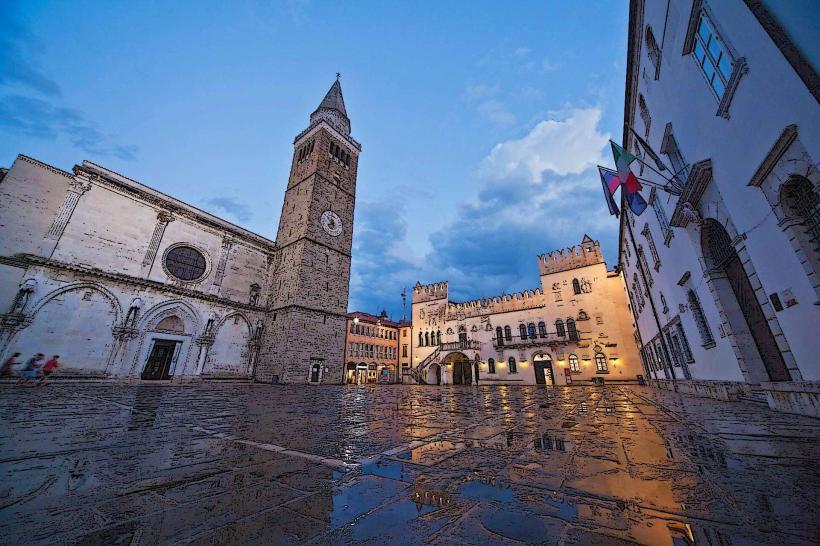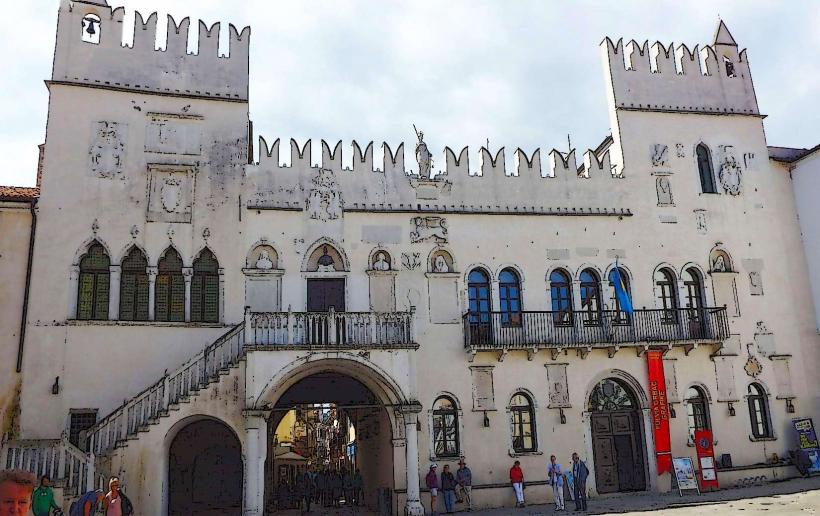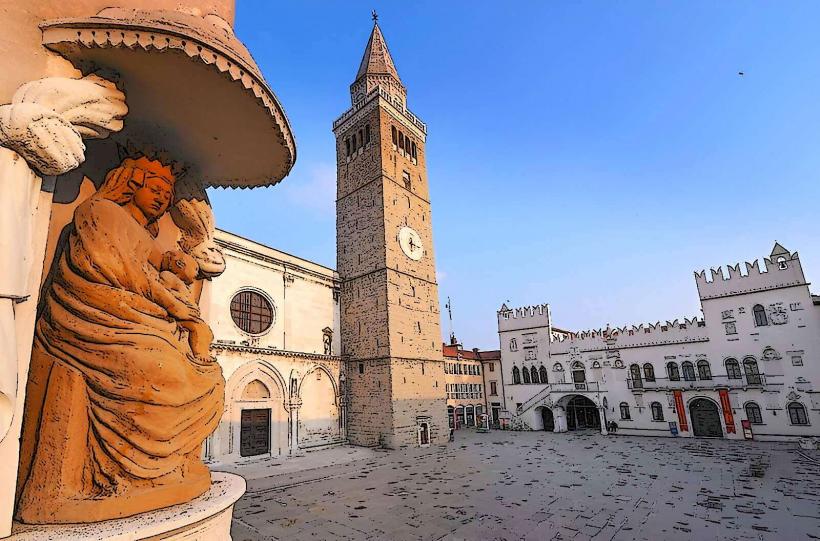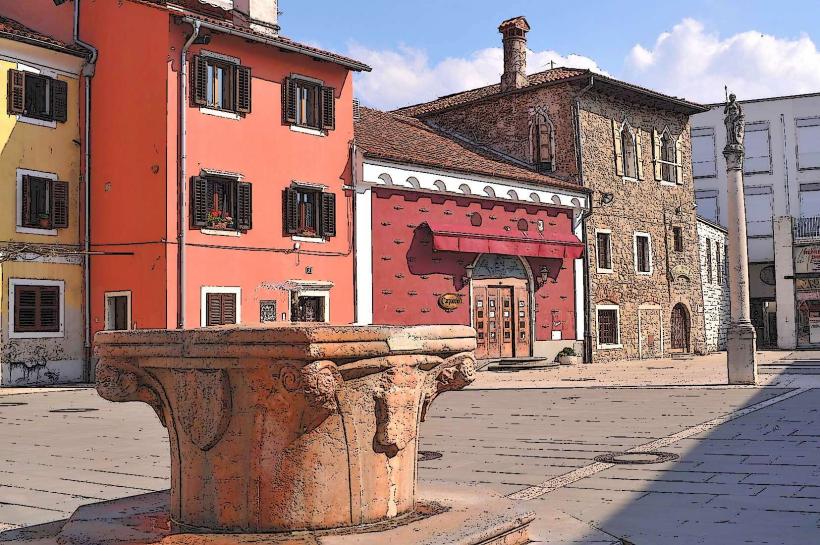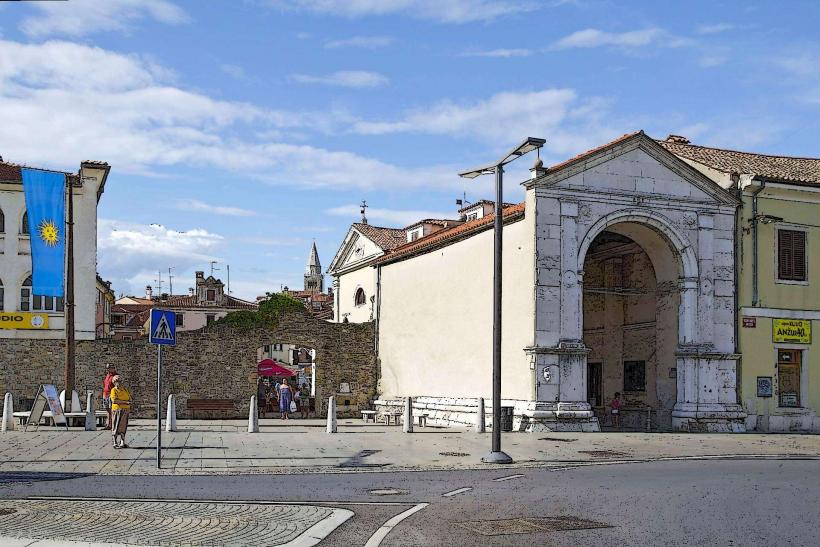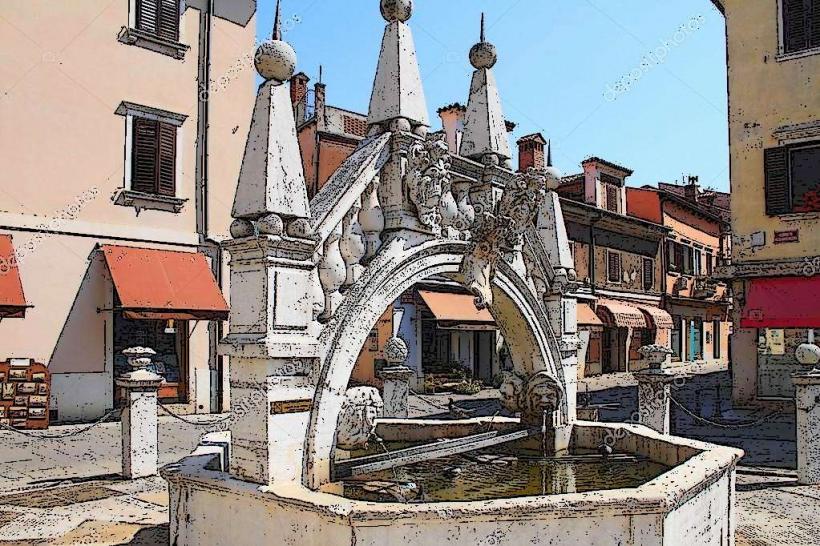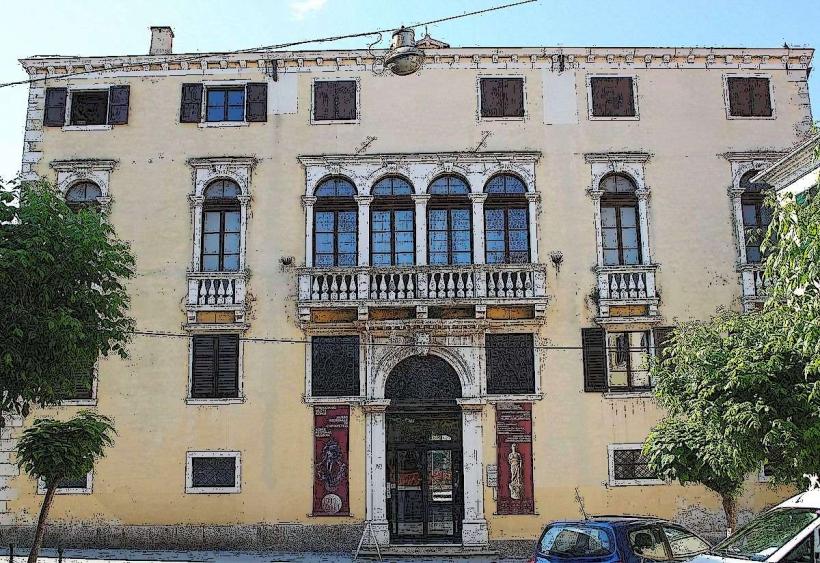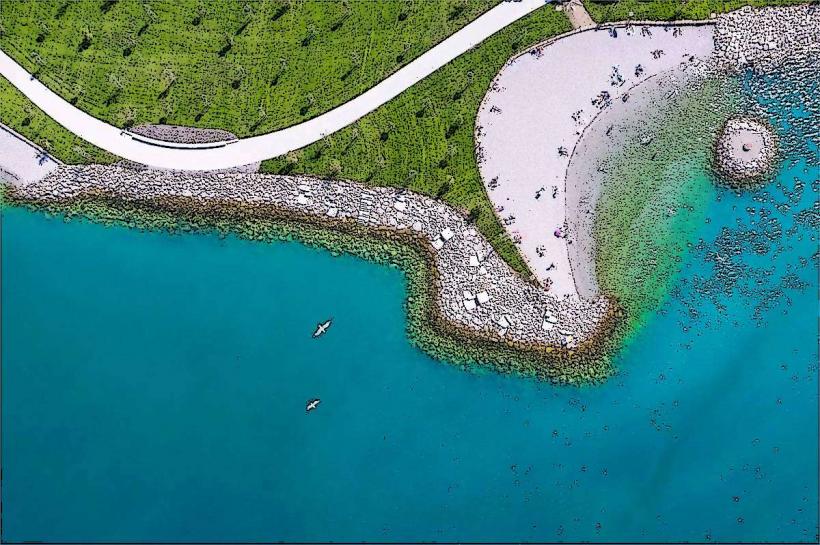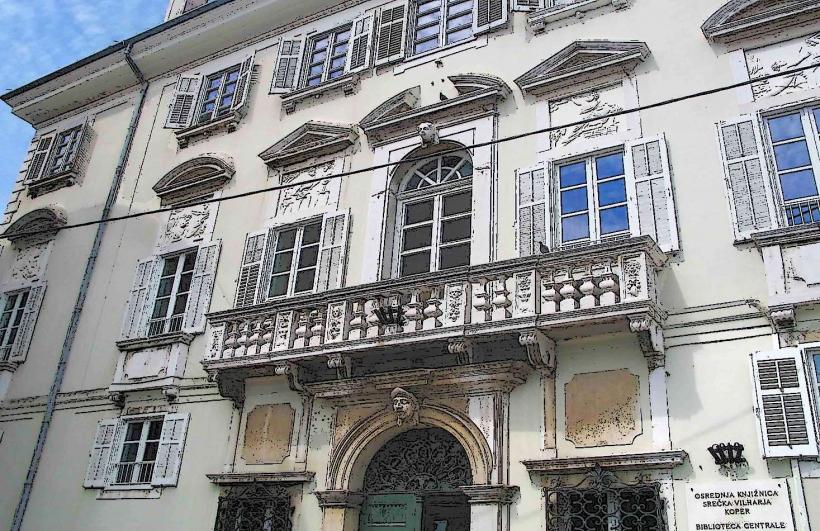Information
Landmark: The TavernaCity: Koper
Country: Slovenia
Continent: Europe
Taverna in Koper, Slovenia, is a significant historical building located in the heart of the old town. The name "Taverna" refers to a medieval building that served as a public gathering place for the people of Koper. Historically, such taverns or public houses were essential hubs for local social life, trade, and commerce, especially in coastal and port cities like Koper.
Overview
- Name: Taverna
- Location: Koper, Slovenia (Old Town)
- Significance: A prominent historical building that reflects the commercial and social history of Koper, dating back to the medieval period and representing the city's Venetian influence.
Historical Background
Medieval Roots:
- The Taverna building dates back to the 13th century when Koper was a major port city under the influence of the Venetian Republic. The structure was originally used for commercial purposes, including as a warehouse or storage area for goods arriving in the city.
- Over time, the building evolved into a public tavern or gathering place, catering to sailors, merchants, and local residents who frequented the area to socialize and conduct business.
Role in Koper's Commerce:
- Koper’s strategic position as a port city made it an important center for trade in the Venetian Republic. Taverns like the Taverna were vital places for merchants and traders to discuss business deals, share news, and network. They were often located near the harbor to accommodate the influx of travelers and workers.
- The Taverna likely played a role in the economic life of Koper, with local and visiting merchants meeting to exchange goods, services, and information.
Venetian Influence:
- Like many other buildings in Koper, the Taverna was influenced by Venetian architectural and cultural styles. The Venetians were known for their love of public spaces, and the tavern would have been an important part of public life in the city during the height of Venetian power in Koper.
Architectural Features
- Medieval and Venetian Design:
- The Taverna building is an example of medieval architecture, with stone walls, arched windows, and large wooden doors typical of the period. It is also marked by Venetian elements, such as the use of arcades and balconies that reflect the Renaissance influence on the city.
- Functionality:
- Originally designed as a functional commercial building, the Taverna likely had large rooms for storage and meeting spaces. Over time, the building was adapted to serve as a place of social gathering and refreshment, with an open layout designed to accommodate multiple visitors at once.
- Renovations and Preservation:
- While much of the Taverna's original structure has been preserved, it has undergone some renovations over the centuries. The building still retains much of its medieval charm and is considered an important part of Koper’s historical and architectural heritage.
Modern Role
Cultural Landmark:
- Today, the Taverna is a protected historical landmark, attracting tourists and scholars interested in learning about the medieval period and Venetian rule in Koper. It remains a symbol of Koper’s commercial past and its importance as a port city.
Public Space:
- The building is located in the heart of Koper’s old town, and it often serves as a venue for cultural events and public gatherings. Its central location makes it a popular stop for those exploring the historical core of Koper.
Visitor Attraction:
- The Taverna is part of the Koper Old Town walking route, where visitors can explore Koper’s rich history, including its medieval and Venetian heritage. It is often included in guided tours of the town, which highlight the city's historical significance and its transformation over the centuries.
Nearby Attractions
- Tito Square: The main square of Koper, located a short walk from the Taverna, featuring significant historical buildings like the Praetorian Palace and Koper Cathedral.
- Praetorian Palace: A Renaissance palace that once housed the Venetian authorities in Koper and now serves as a museum and exhibition space.
- Koper Cathedral: The Cathedral of the Assumption of the Virgin Mary, a Romanesque church with a bell tower offering panoramic views of the city.
- Muda Gate: A medieval city gate, one of the few remaining parts of Koper’s old fortifications, located near the central square.
Visitor Information
- Location: Koper, Slovenia (Old Town)
- Opening Hours:
- As a historical building, the Taverna is generally open to the public during the day and may host special events in the evening, but specific visiting hours may vary depending on the current use of the space (e.g., museum, event space, or cultural venue).
- Admission:
- Free access to the exterior of the building and the surrounding square. If visiting for events or as part of a guided tour, check for ticket information.
Tips for Visitors
- Explore the Old Town: After visiting the Taverna, take time to explore Koper’s old town with its narrow streets, historical buildings, and charming squares.
- Photography: The Taverna, with its medieval design and Venetian elements, makes for an excellent photographic subject.
- Cultural Events: If visiting during a local festival or cultural event, check if the Taverna is hosting any exhibitions, performances, or activities that showcase Koper's rich history.
- Guided Tours: Consider joining a guided tour of Koper to learn more about the Taverna and the city’s historical significance during the Venetian era.
Conclusion
The Taverna in Koper is a fascinating historical building that plays an important role in the city’s medieval and Venetian history. Once a commercial building and social gathering place, it now stands as a symbol of Koper’s rich past and is an essential part of the city’s cultural heritage. Whether you are exploring the old town, attending a cultural event, or simply admiring the architecture, the Taverna is a must-see destination for visitors to Koper.

